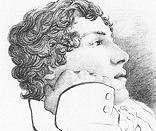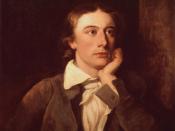This sonnet is an attempt by Keats to link the natural life cycles of birth, life, death, and rebirth to the four seasons and from there to the nature of human existence. Taken literally, the poem is essentially a very eloquent description of the four seasons of spring, summer, autumn and winter, applied to the "mind of man" or the human demeanor. If interpreted in a more metaphorical sense, the poem takes on a distinctly different meaning. Keats opens the sonnet by establishing the fact that "There are four seasons in the mind of man". This could be taken to mean that this 'changing of seasons' affects only the abstractions of mind and spirit, and not the physical form of man. This idea is maintained throughout the poem as Keats goes on to describe in detail the different seasons of the "mind of man". It seems that Keats has a desire for his life to become cyclical and wishes that he could "forego his mortal nature".
The final couplet however, reminds us of the "mortal nature" of man and questions the abstractions presented in the poem. The final line suggests an interpretation that is more like an analogy. "The Human Seasons" could be taken to be an analogy linking the different periods or "seasons" in a human life with the four seasons of the natural world. Keats begins by describing spring which when applied to the analogy represents the youthful time of man. "his lusty Spring, when fancy clear" is Keats' description of youthful exuberance and of the search for well defined desires ("fancy clear"). Spring is the vigorous period of human existence when man has no limits and is occupied with the quest for "beauty" something that he can obtain with a measure of ease, "Takes in all...


